Dynamical Analysis and Solitary Wave Solutions of the Zhanbota-IIA Equation with Computational Approach
Abstract
1. Introduction
2. Model Reduction Process
3. Bifurcation Analysis of Equation (19)
Equilibrium Points
- If , the critical point is a saddle point.
- If and , then is a node. It is stable if and unstable if .
- If and , the critical point is a center.
- If , , and , then is a focus. It is stable if and unstable if .
- If and the Poincaré index of is zero, the critical point is referred to as a zero point.
- Family 1: When and , the dynamical system has three equilibrium points: is the origin, , and . The values of at these points are , , and . Hence, by Proposition (i), is a saddle point and by Proposition 1, and are center points as shown in Figure 1a.
- Family 2: When and , the dynamical system has three equilibrium points: is the origin, , and . The values of at these points are , , and . Hence, by Proposition 1, is a center point and by Proposition 1, and are saddle points as shown in Figure 1b.
- Family 3: When and , the dynamical system has three equilibrium points: is the origin, and the other points are complex. The value of at is . Hence, by Proposition 1, is a saddle point as shown in Figure 1c.
4. Hamiltonian Analysis
5. Characterizing Chaotic Behavior in Equation (4)
6. Sensitivity Analysis
- The initial condition is represented by the red curve, and by the green curve in Figure 12.
- The initial condition is represented by the red curve, and by the green curve in Figure 13.
- The initial condition is represented by the red curve, and by the green curve in Figure 14.
- The initial condition is represented by the red curve, and by the green curve in Figure 15.
- The initial condition is represented by the red curve, and by the green curve in Figure 16.
7. Solitary Wave Solutions for Equation (4)
8. Graphical Interpretation
9. Conclusions
Author Contributions
Funding
Data Availability Statement
Acknowledgments
Conflicts of Interest
References
- Awan, S.E.; Badshah, F.; Awais, M.; Parveen, N.; Sabir, Z.; Khan, Z.A. Analyzing unsteady flow of shear-thinning nanofluids over a cylinder with exponential stretching and shrinking: An artificial neural network approach. Chaos Solitons Fractals 2025, 195, 116301. [Google Scholar] [CrossRef]
- Ma, W.X. A combined integrable hierarchy with four potentials and its recursion operator and bi-Hamiltonian structure. Indian J. Phys. 2025, 99, 1063–1069. [Google Scholar] [CrossRef]
- Ma, W.X.; Zhong, Y.D. A 4×4 Matrix Spectral Problem Involving Four Potentials and Its Combined Integrable Hierarchy. Axioms 2025, 14, 594. [Google Scholar] [CrossRef]
- Mathanaranjan, T.; Yesmakhanova, K.; Myrzakulov, R.; Naizagarayeva, A. Optical wave structures and stability analysis of integrable Zhanbota equation. Mod. Phys. Lett. B 2024, 39, 2550071. [Google Scholar] [CrossRef]
- Butt, A.R.; Farooq, F.B.; Abbas, H.; Alqahtani, N.A.; Imran, M.; Bekir, A. Multi-stability and dynamical analysis of Zhanbota-IIA equation with couple of integrating architectures. Phys. Scr. 2024, 100, 015220. [Google Scholar] [CrossRef]
- He, J.H. Some asymptotic methods for strongly nonlinear equations. Int. J. Mod. Phys. B 2006, 20, 1141–1199. [Google Scholar] [CrossRef]
- Kong, H.Y.; Guo, R. Dynamic behaviors of novel nonlinear wave solutions for the Akbota equation. Optik 2023, 282, 170863. [Google Scholar] [CrossRef]
- Sergazina, A.; Myrzakulova, Z.; Yesmakhanova, K.; Myrzakulov, R.; Nugmanova, G. Integrable spin systems in 2 + 1, 1 + 1 and 1 + 0 dimensions. a(a+1) 2023, 2, x2. [Google Scholar] [CrossRef]
- Li, P.; Qiao, R.; Xu, C.; Yiao, M.; Qu, Y.; Ahmad, S. Exploration of soliton solutions and dynamical analysis of the q-form Zhanbota equation: An application to image encryption. Phys. A Stat. Mech. Appl. 2025, 675, 130809. [Google Scholar] [CrossRef]
- He, G.; Liu, S.H. Physics of Nonlinear Optics; World Scientific: Singapore, 1999. [Google Scholar]
- Cao, X. Bäcklund transformations with two pseudo-potentials. Appl. Math. Lett. 2016, 61, 13–19. [Google Scholar] [CrossRef]
- Hussain, E.; Tedjani, A.H.; Farooq, K.; Beenish. Modeling and Exploration of Localized Wave Phenomena in Optical Fibers Using the Generalized Kundu–Eckhaus Equation for Femtosecond Pulse Transmission. Axioms 2025, 14, 513. [Google Scholar] [CrossRef]
- Beenish; Hussain, E.; Younas, U.; Tapdigoglu, R.; Garayev, M. Exploring Bifurcation, Quasi-Periodic Patterns, and Wave Dynamics in an Extended Calogero–Bogoyavlenskii–Schiff Model with Sensitivity Analysis. Int. J. Theor. Phys. 2025, 64, 146. [Google Scholar] [CrossRef]
- Arshed, S.; Raza, N.; Kaplan, M. Painlevé analysis, dark and singular structures for pseudo-parabolic type equations. Mod. Phys. Lett. B 2022, 36, 2250104. [Google Scholar] [CrossRef]
- Zhang, X.; Chen, Y. Inverse scattering transformation for generalized nonlinear Schrödinger equation. Appl. Math. Lett. 2019, 98, 306–313. [Google Scholar] [CrossRef]
- Li, Z.; Lyu, J.; Hussain, E. Bifurcation, chaotic behaviors and solitary wave solutions for the fractional Twin-Core couplers with Kerr law non-linearity. Sci. Rep. 2024, 14, 22616. [Google Scholar] [CrossRef]
- Hussain, E.; Malik, S.; Yadav, A.; Shah, S.A.A.; Iqbal, M.A.B.; Ragab, A.E.; Mahmoud, H.M. Qualitative analysis and soliton solutions of nonlinear extended quantum Zakharov–Kuznetsov equation. Nonlinear Dyn. 2024, 112, 19295–19310. [Google Scholar] [CrossRef]
- Jhangeer, A.; Faridi, W.A.; Alshehri, M. Soliton wave profiles and dynamical analysis of fractional Ivancevic option pricing model. Sci. Rep. 2024, 14, 23804. [Google Scholar] [CrossRef] [PubMed]
- Ali, F.; Jhangeer, A.; Muddassar, M. Comprehensive classification of multistability and Lyapunov exponent with multiple dynamics of nonlinear SchrÖdinger equation. Nonlinear Dyn. 2025, 113, 10335–10364. [Google Scholar] [CrossRef]
- Tang, L.; Biswas, A.; Yıldırım, Y.; Alshomrani, A.S. Bifurcations and optical soliton perturbation for the Lakshmanan–Porsezian–Daniel system with Kerr law of nonlinear refractive index. J. Opt. 2024, 1–6. [Google Scholar] [CrossRef]
- Lu, T.; Tang, L.; Chen, Y.; Chen, C. Dynamical behaviors, chaotic pattern and multiple optical solitons for coupled stochastic Schrödinger–Hirota system in magneto-optic waveguides with multiplicative white noise via Itô calculus. Results Phys. 2024, 60, 107679. [Google Scholar] [CrossRef]
- Perko, L. Differential Equations and Dynamical Systems; Springer Science & Business Media: Dordrecht, The Netherlands, 2013; Volume 7. [Google Scholar]
- Beenish; Samreen, M. Bifurcation, Multistability, and Soliton Dynamics in the Stochastic Potential Korteweg-de Vries Equation. Int. J. Theor. Phys. 2025, 64, 1–22. [Google Scholar] [CrossRef]
- Kopçasız, B. Qualitative analysis and optical soliton solutions galore: Scrutinizing the (2 + 1)-dimensional complex modified Korteweg–de Vries system. Nonlinear Dyn. 2024, 112, 21321–21341. [Google Scholar] [CrossRef]
- Beenish; Asim, M.; Boulaaras, S.; Rahman, M.U. Dynamical behaviour and solutions in the fractional Gross–Pitaevskii model. Math. Comput. Model. Dyn. Syst. 2025, 31, 2529190. [Google Scholar] [CrossRef]
- Beenish; Samreen, M.; Salem, A.F. Mathematical Modeling, Bifurcation Theory, and Chaos in a Dusty Plasma System with Generalized (r★, q★) Distributions. Axioms 2025, 14, 610. [Google Scholar] [CrossRef]
- Zhao, S.; Li, Z. The analysis of traveling wave solutions and dynamical behavior for the stochastic coupled Maccari’s system via Brownian motion. Ain Shams Eng. J. 2024, 15, 103037. [Google Scholar] [CrossRef]
- Jhangeer, A.; Beenish. Study of magnetic fields using dynamical patterns and sensitivity analysis. Chaos Solitons Fractals 2024, 182, 114827. [Google Scholar] [CrossRef]
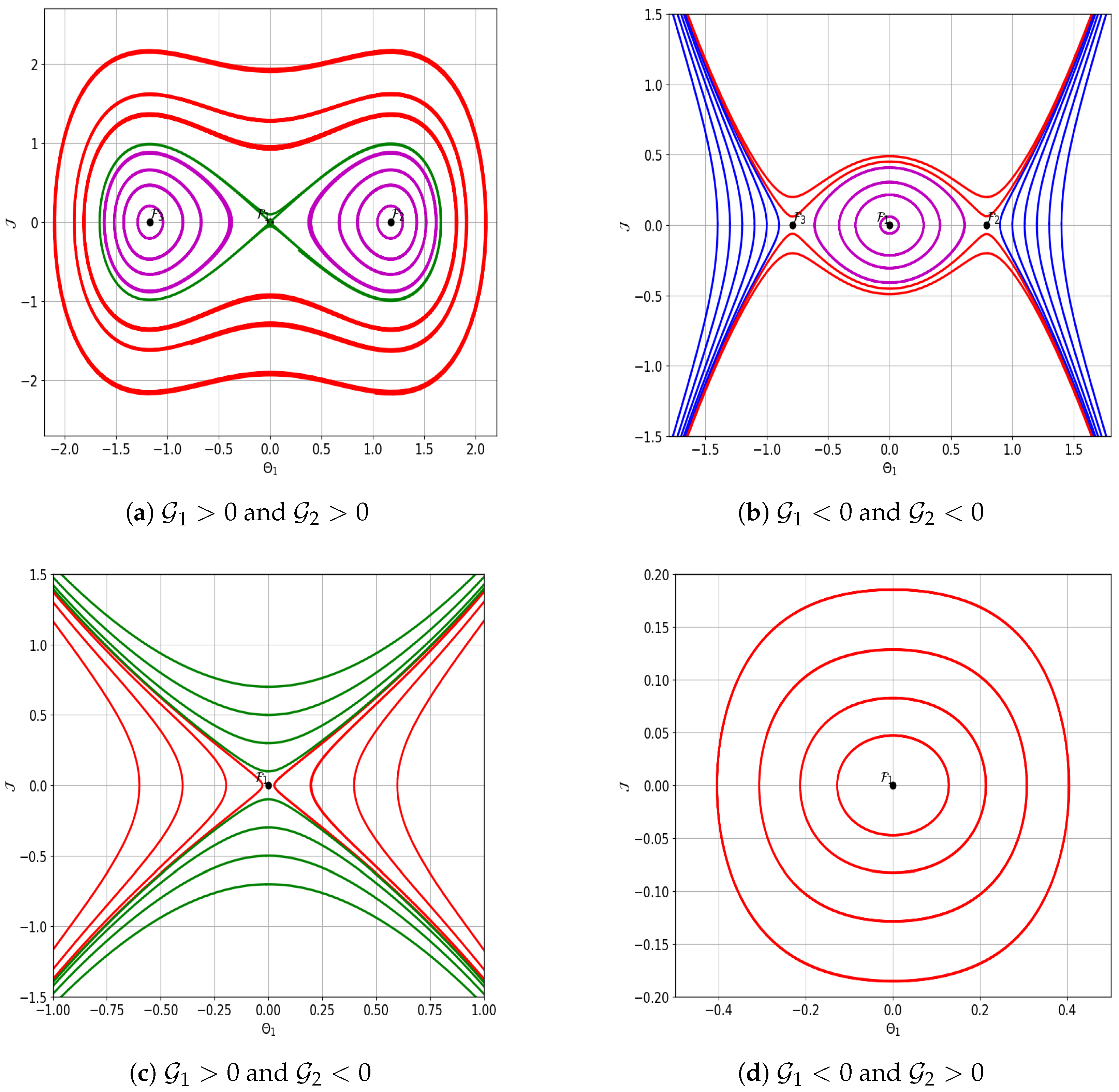
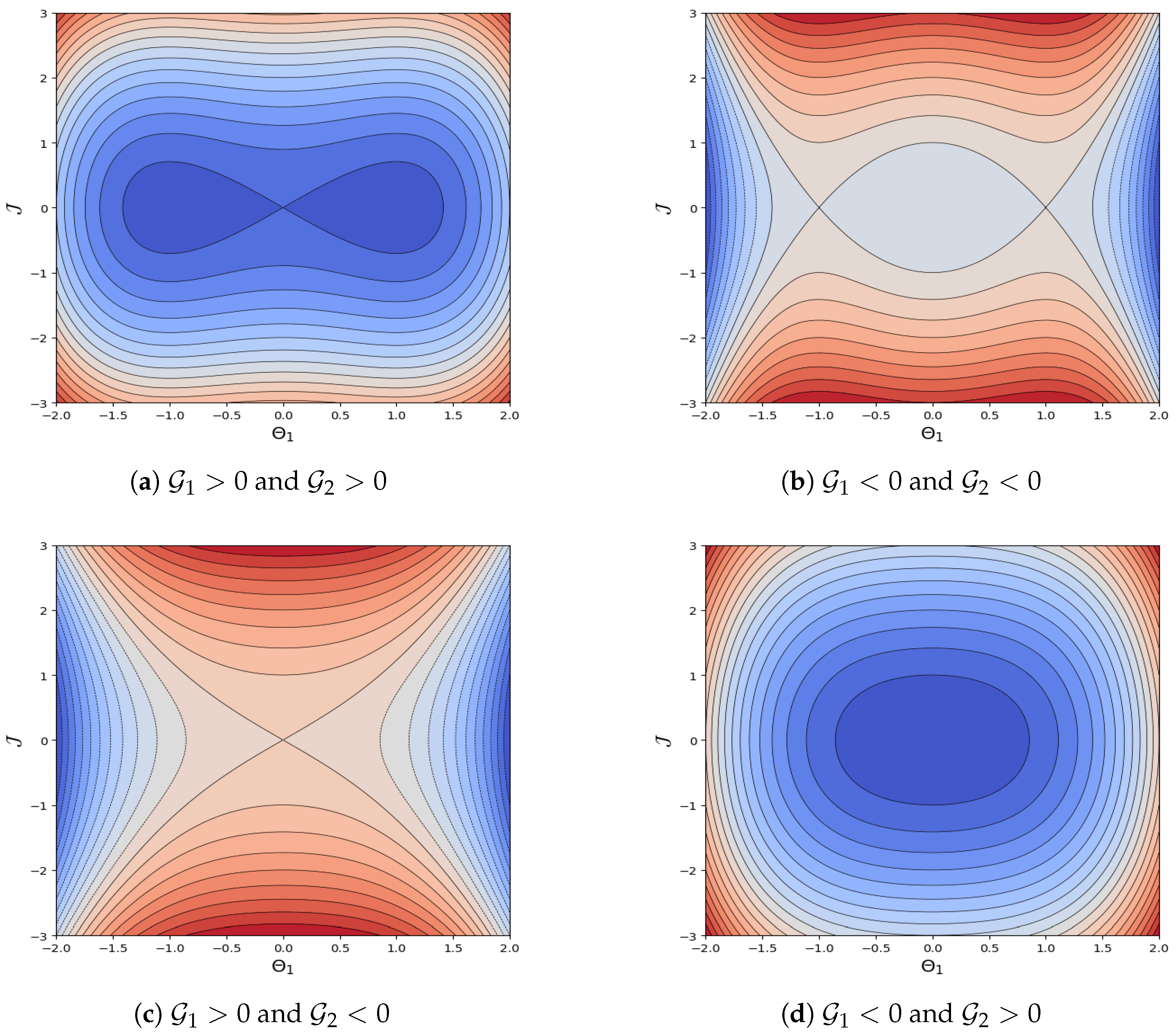
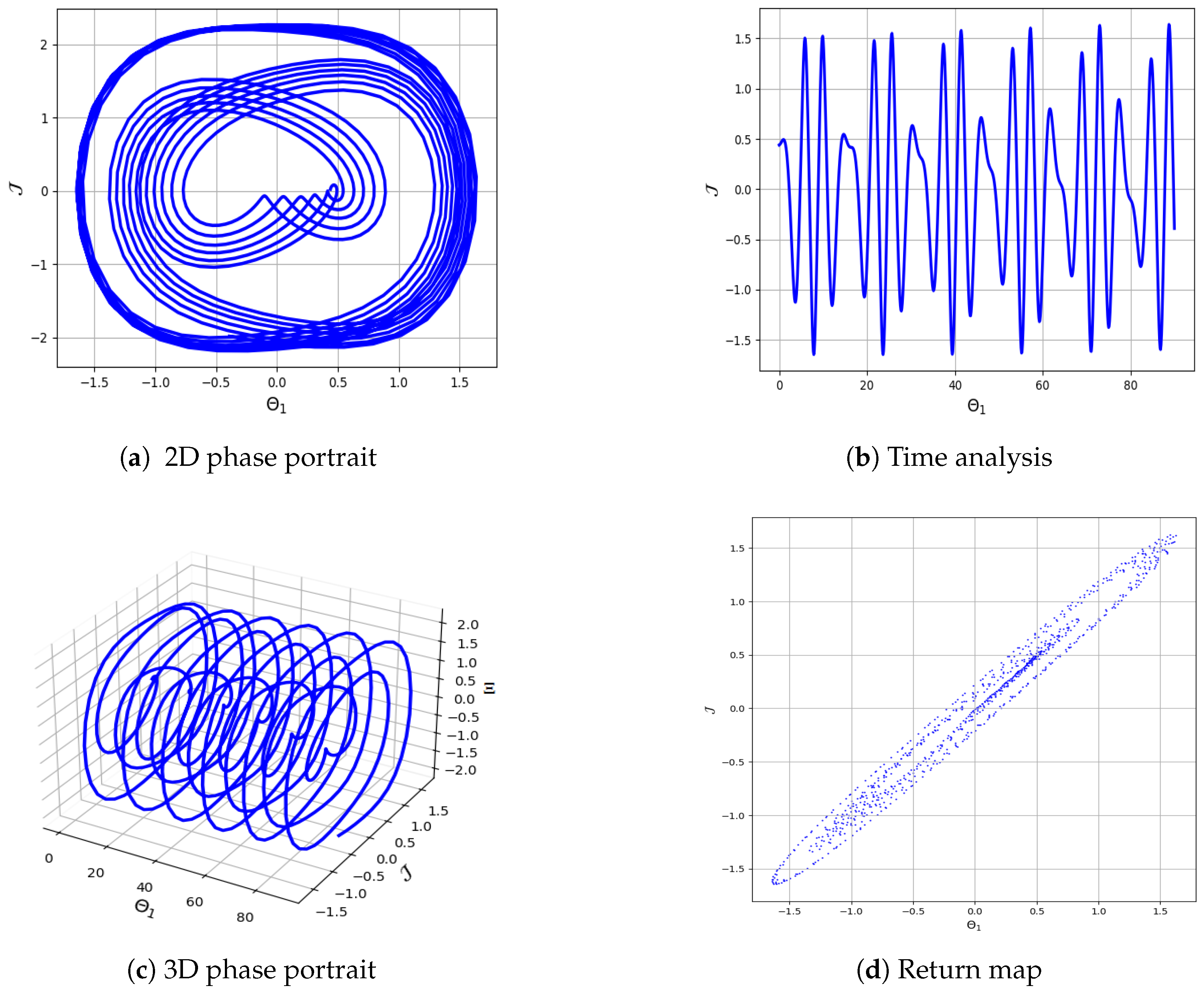
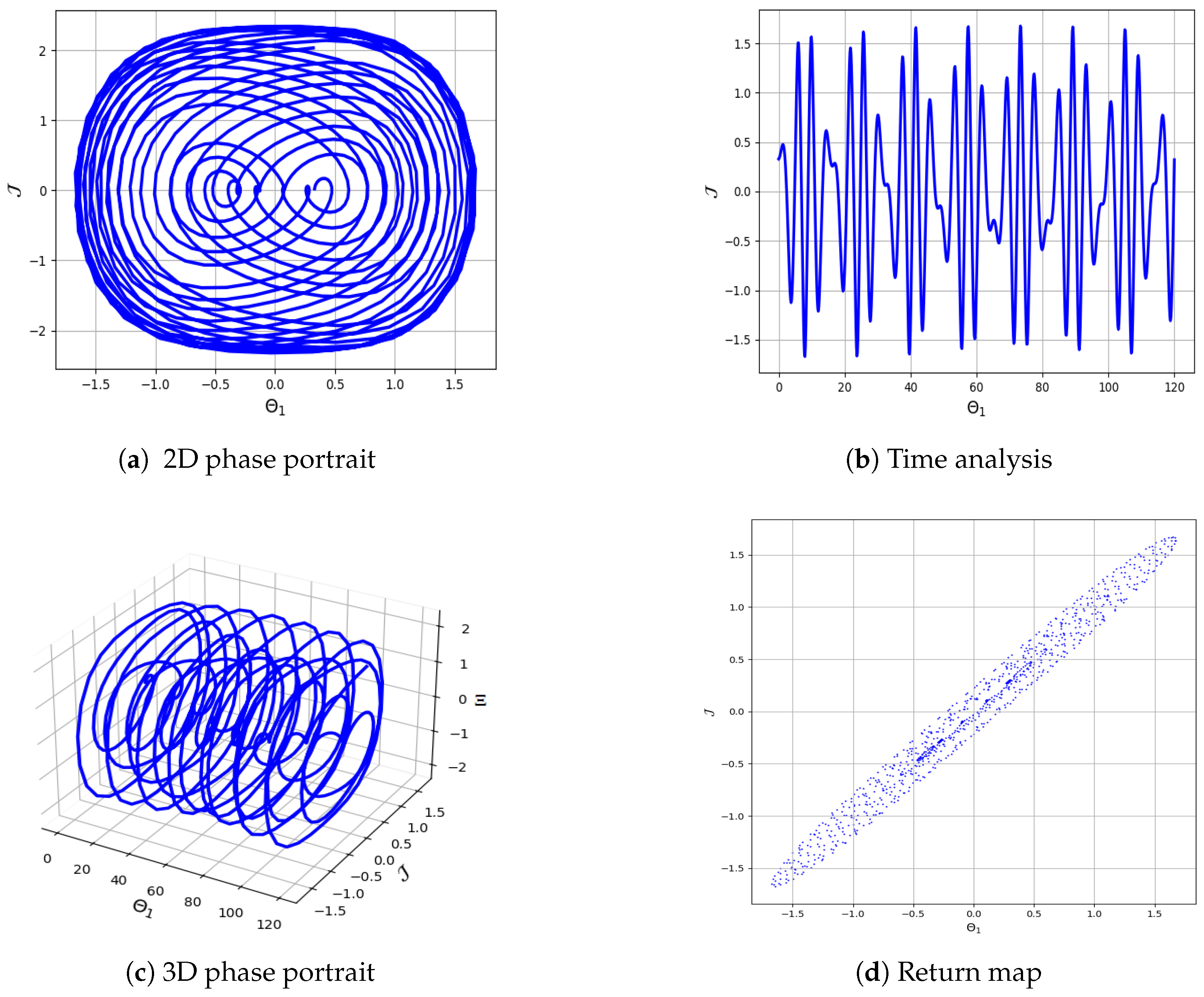
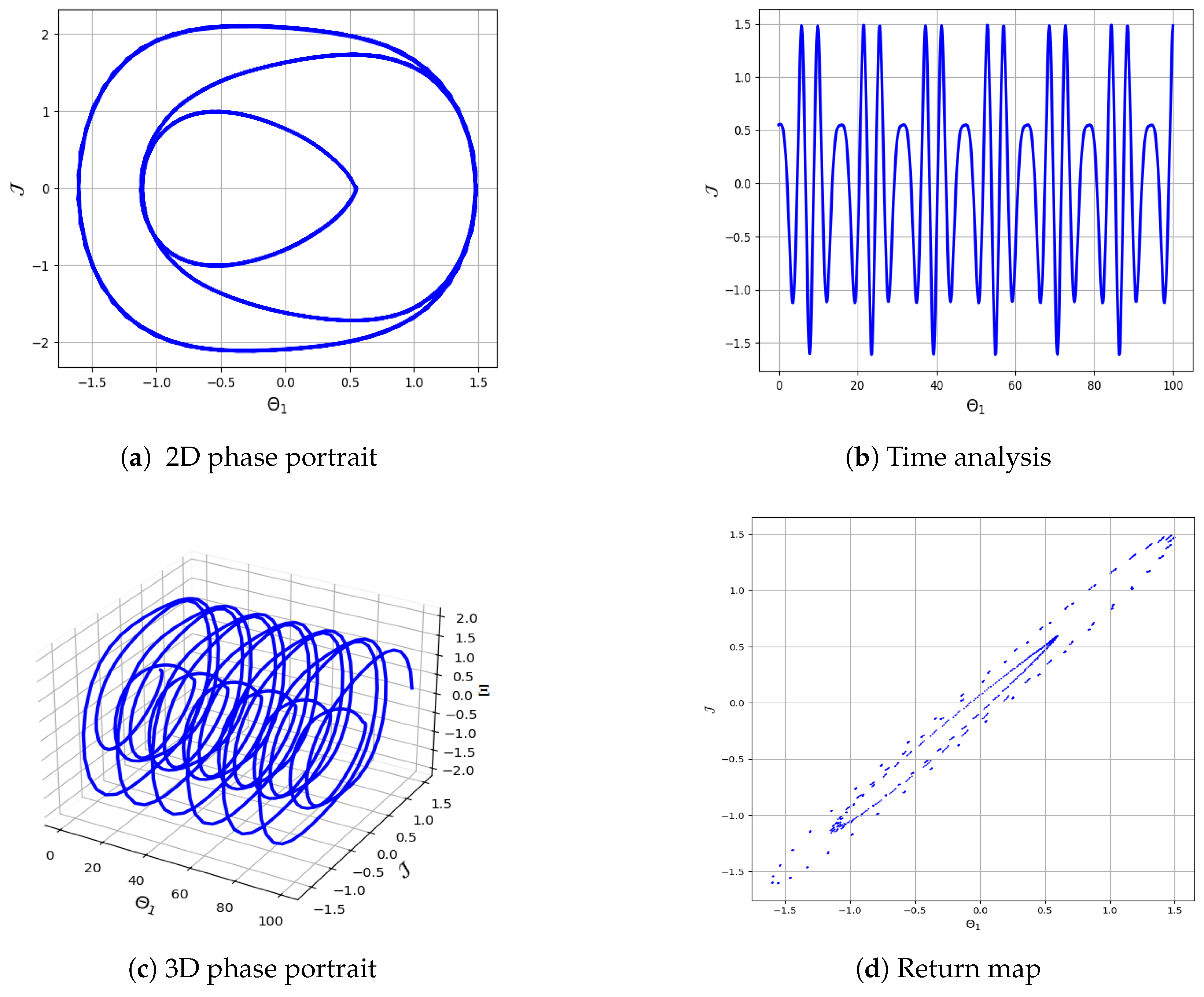
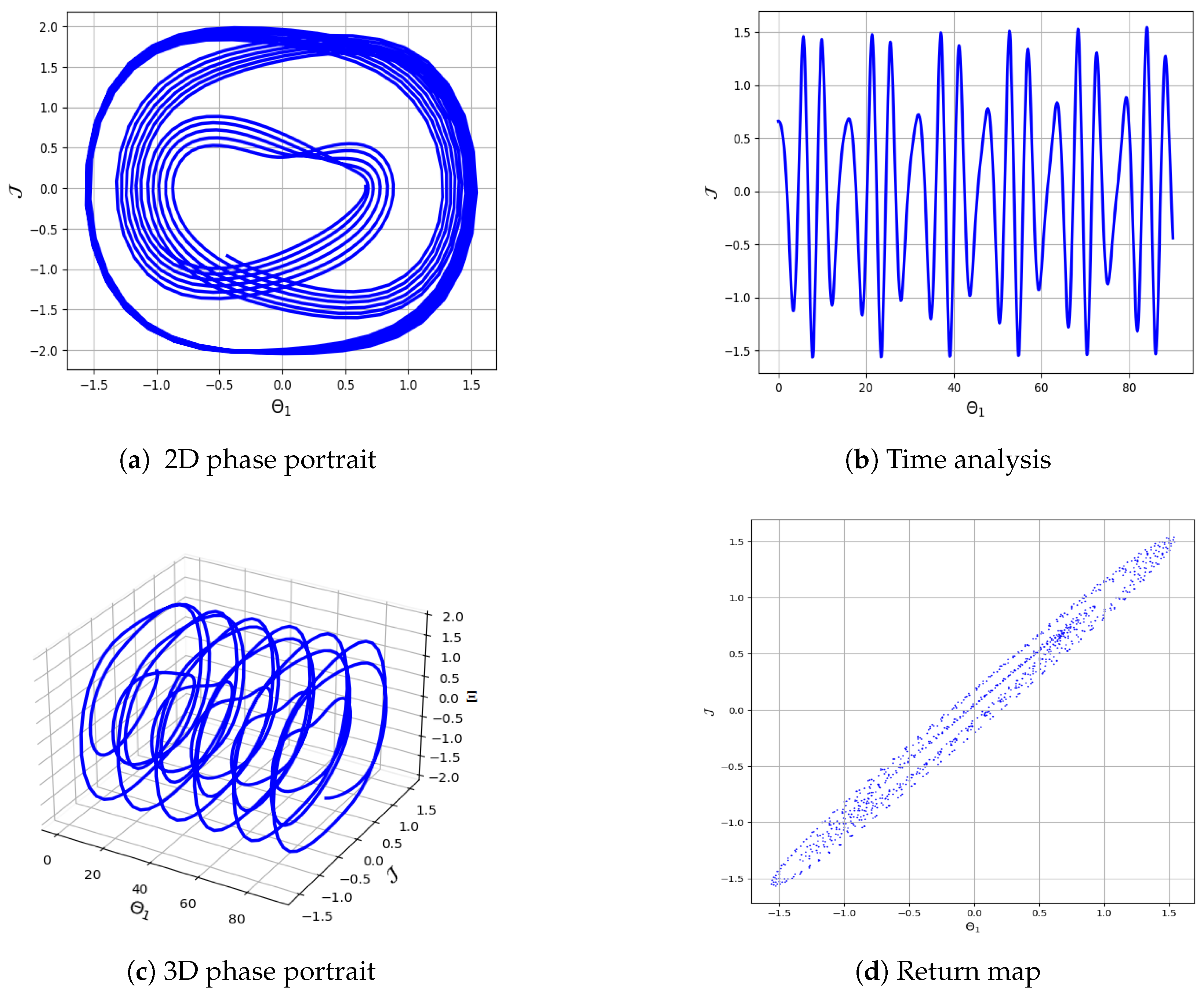


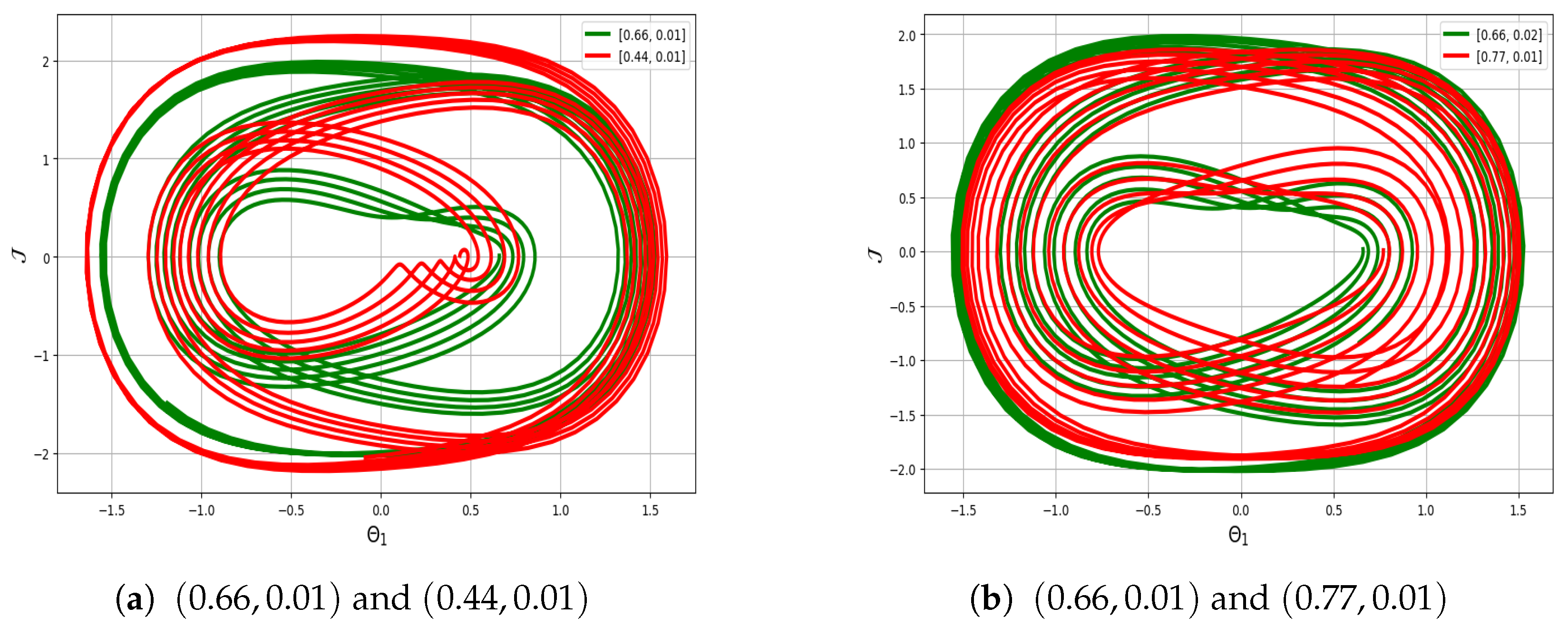

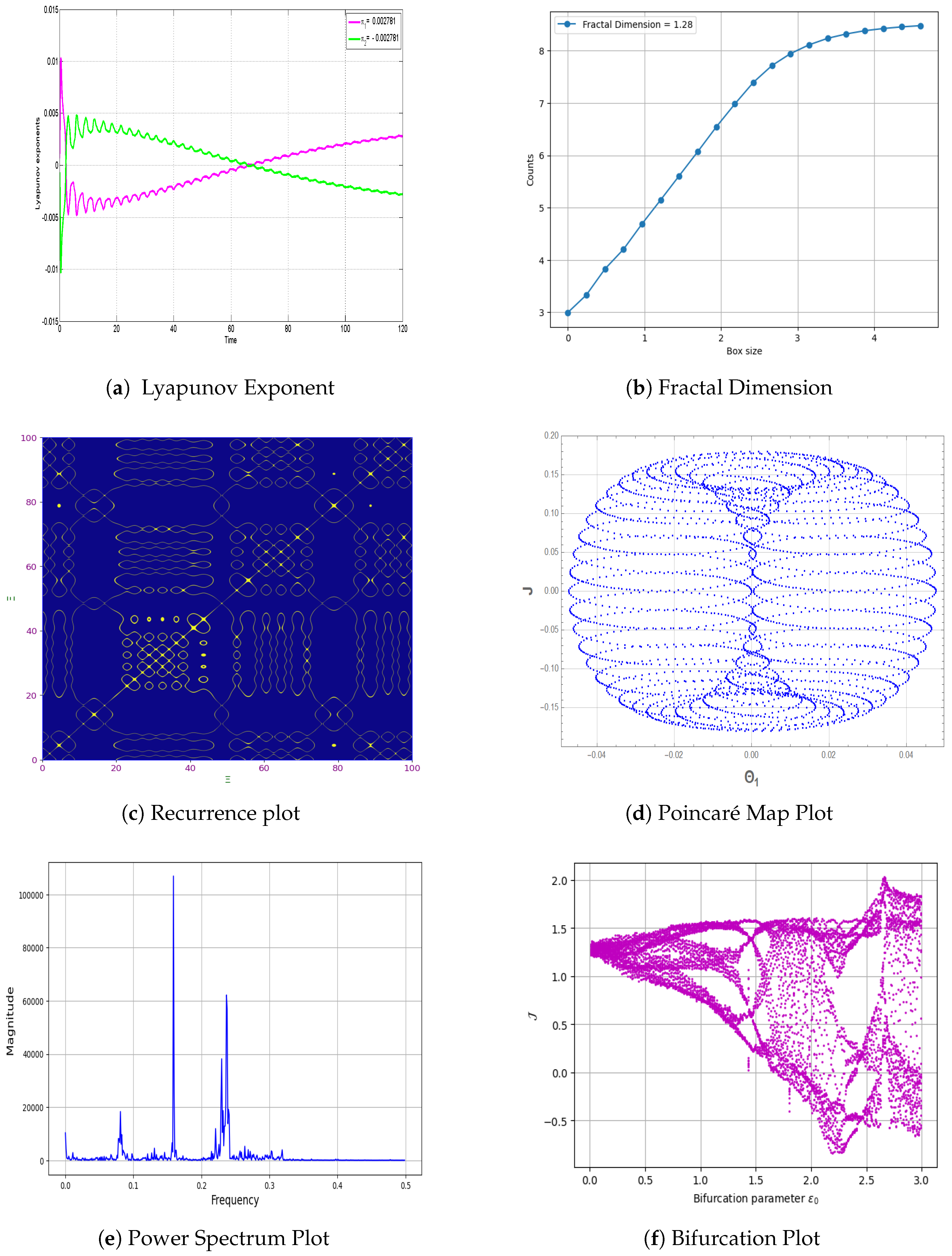
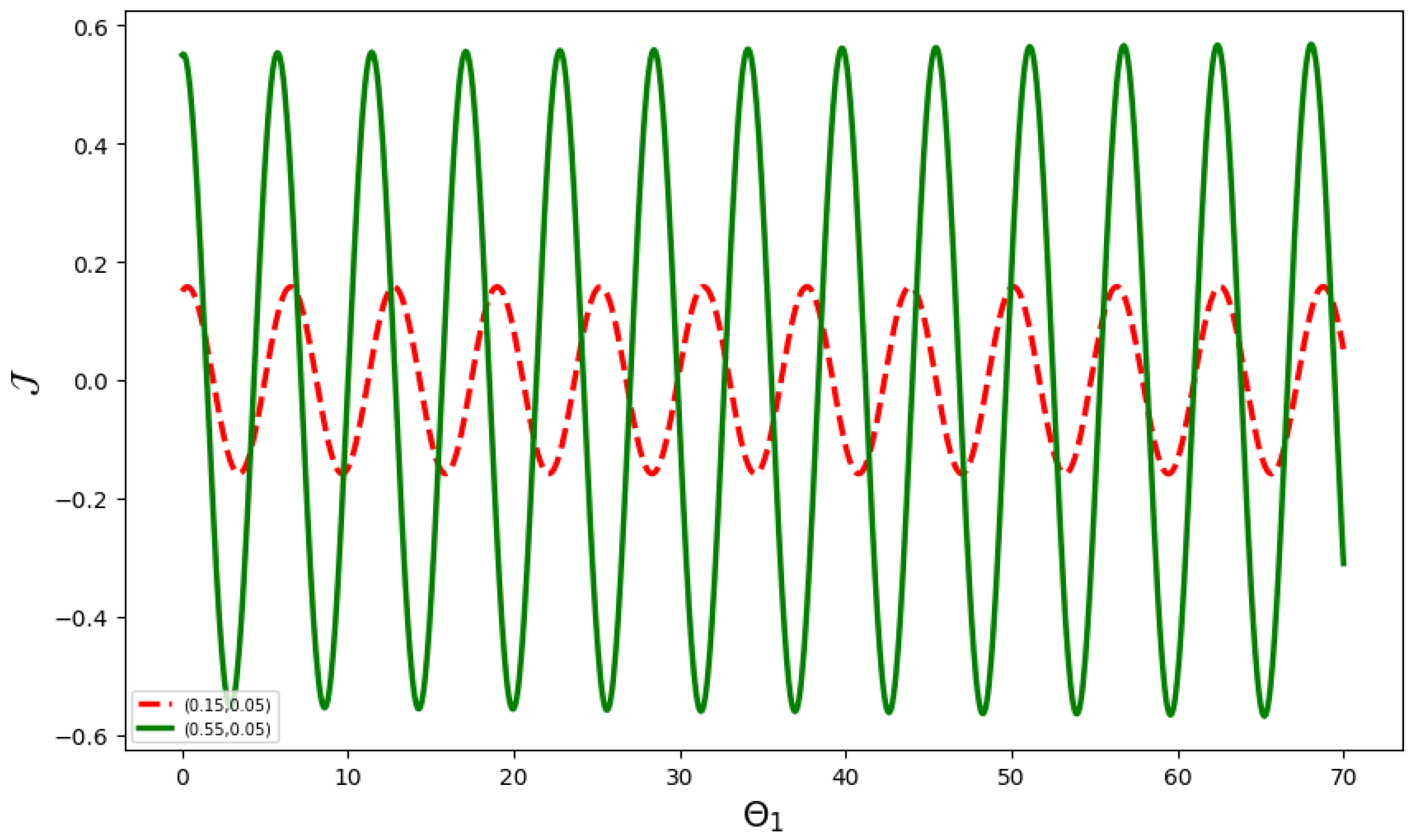
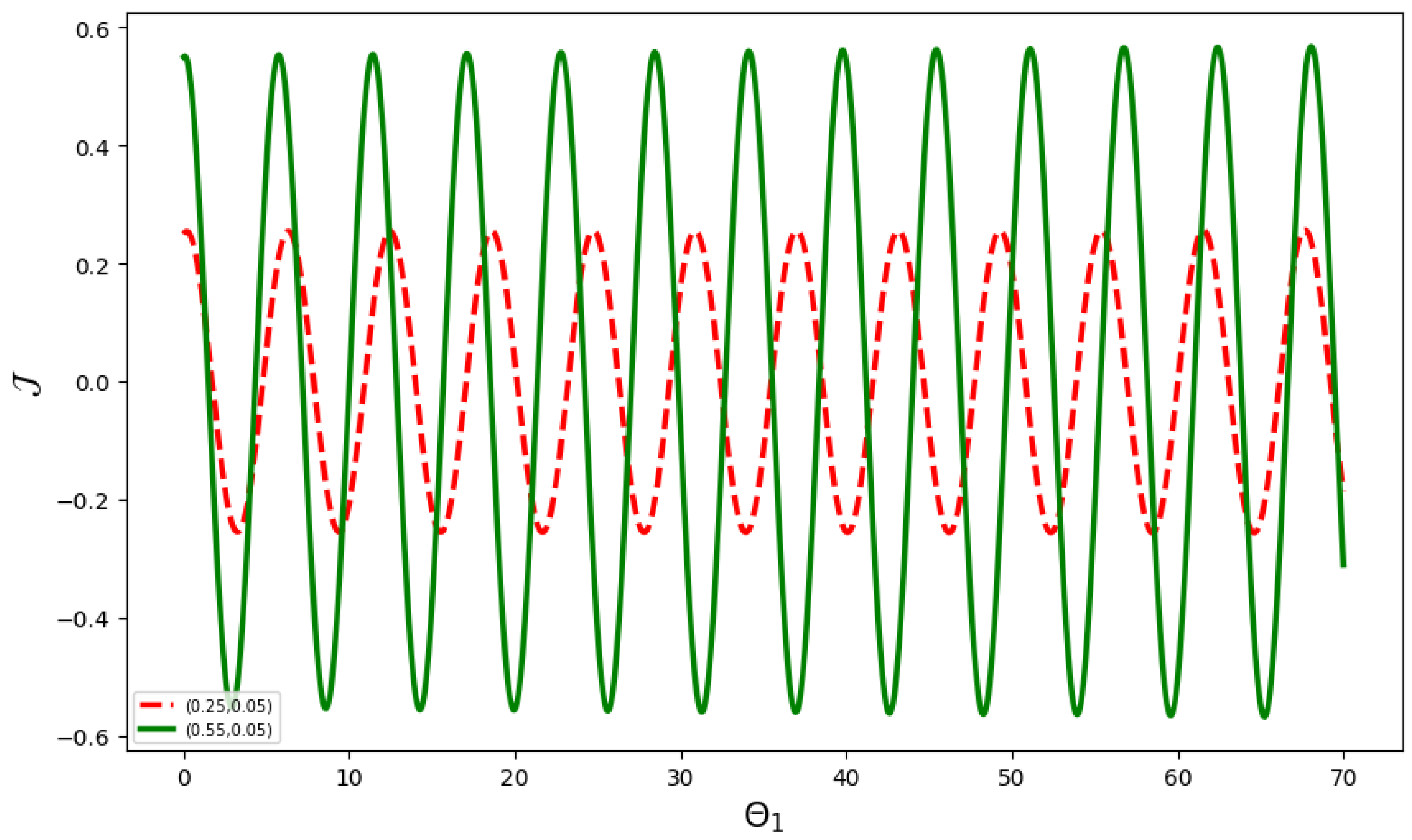
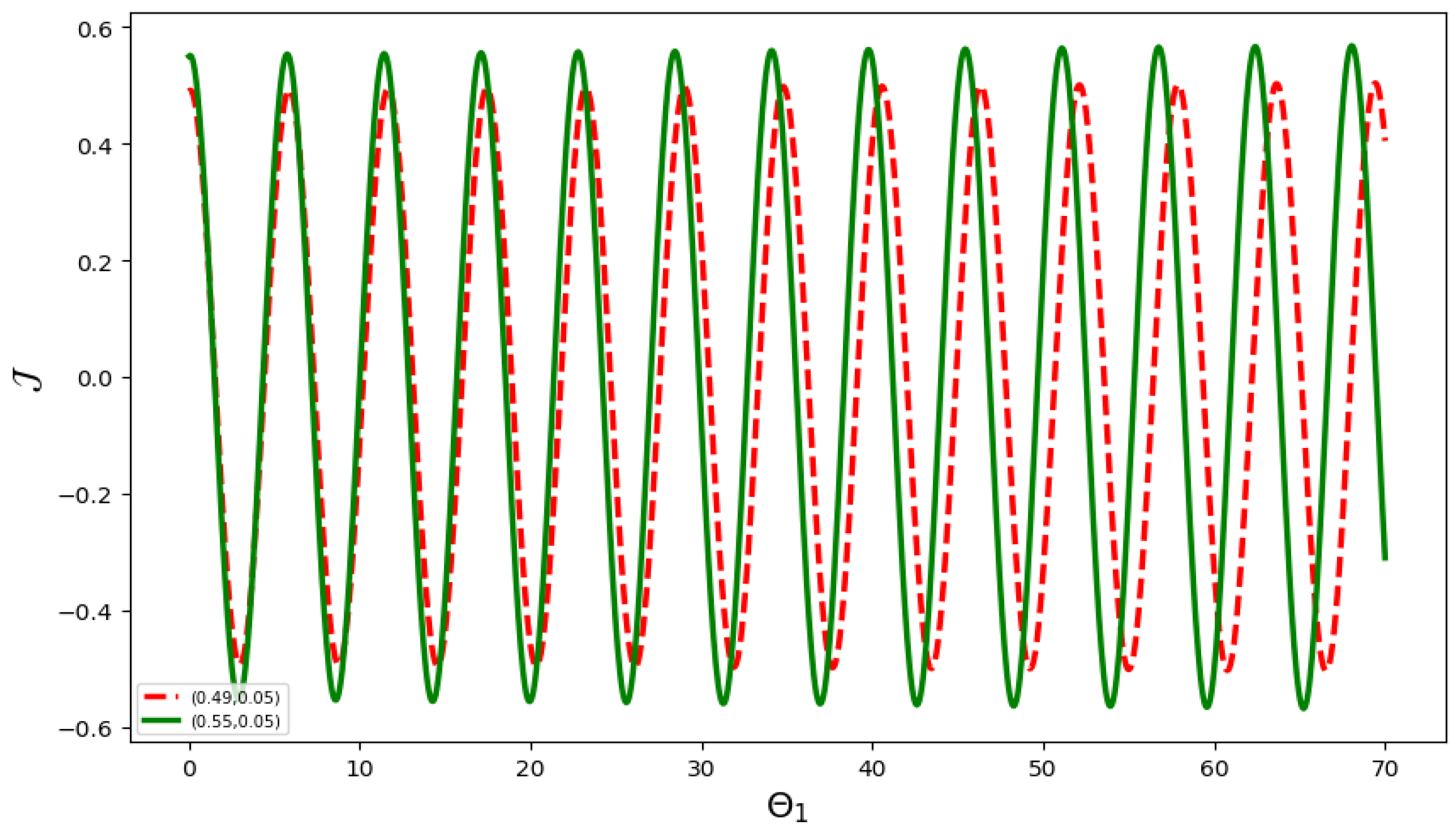


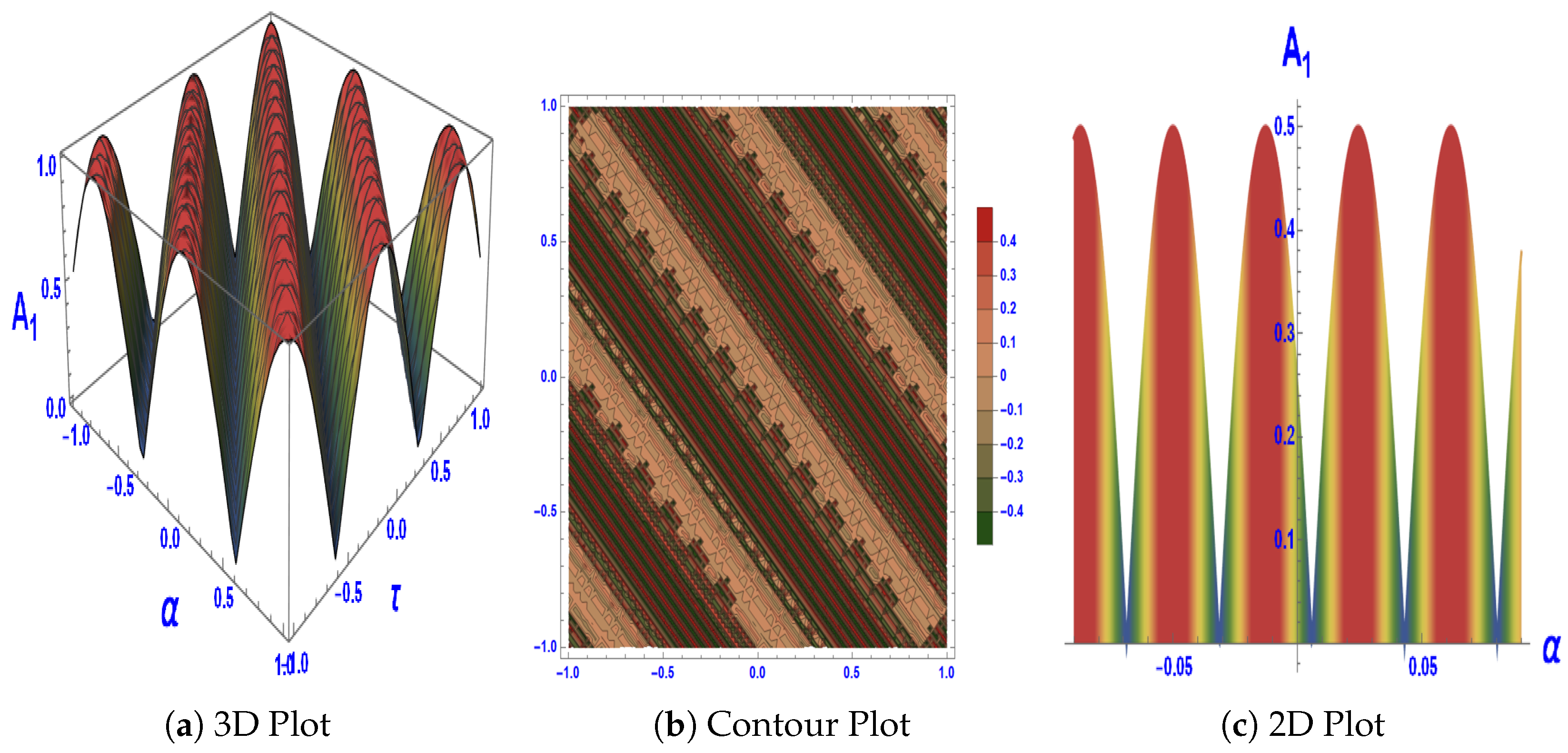
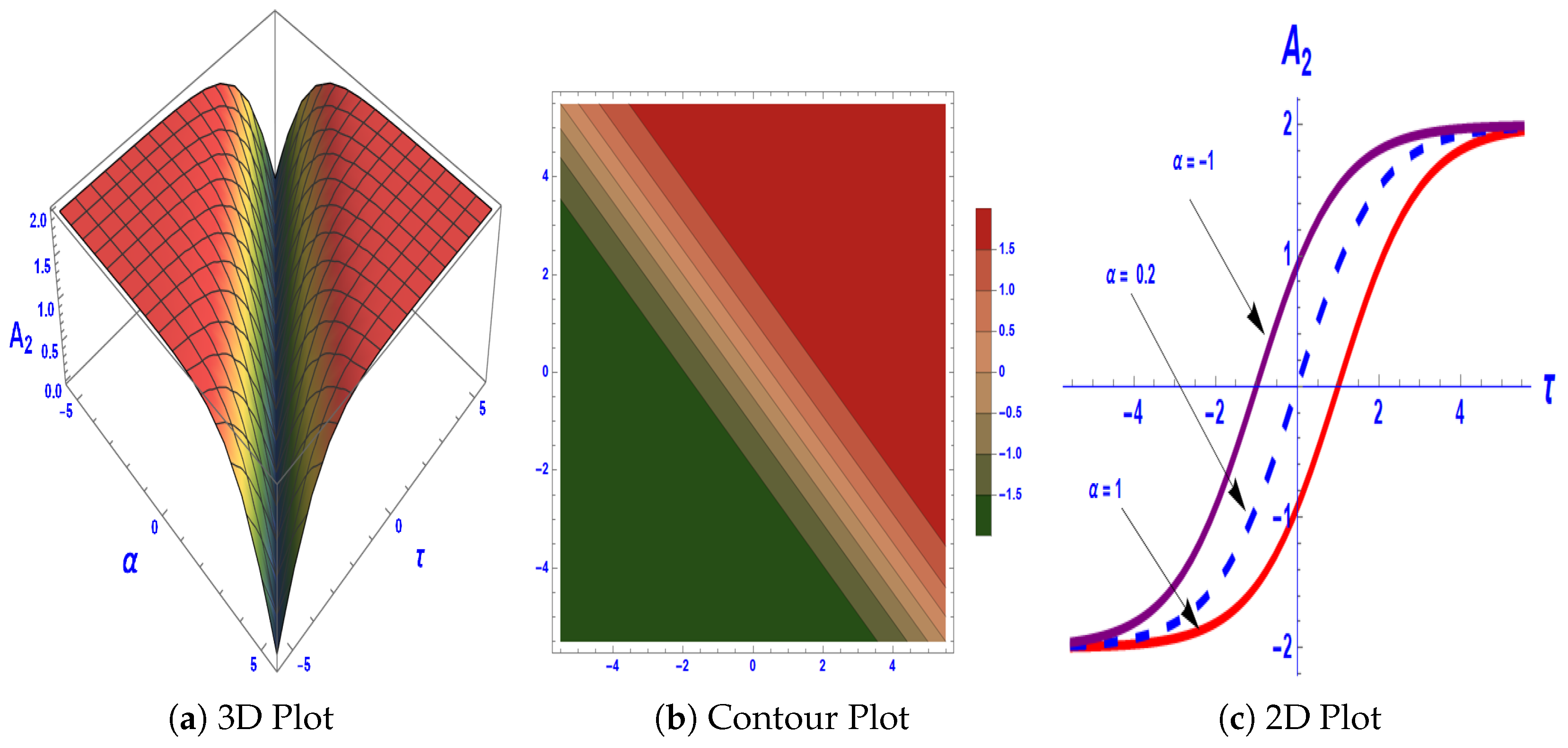
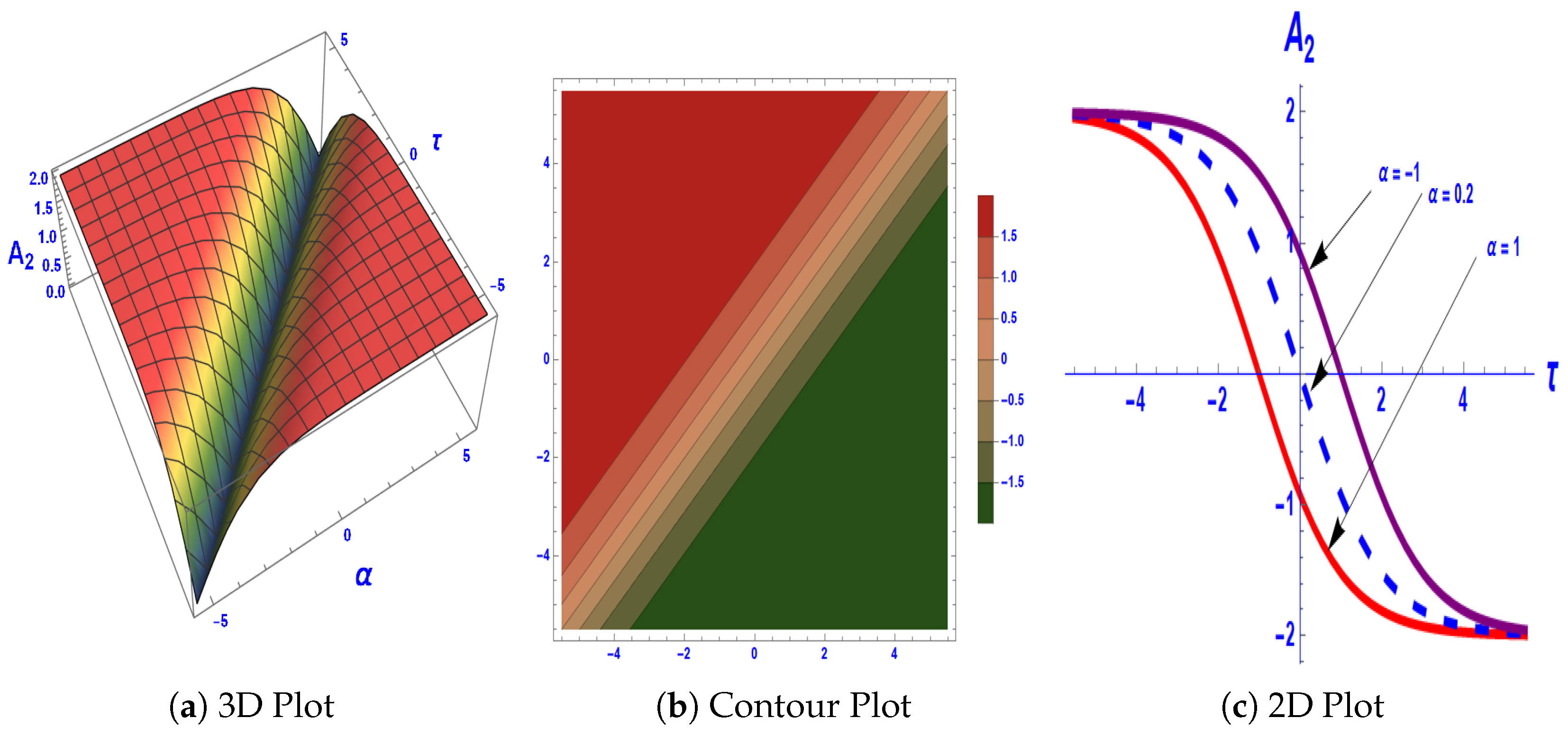
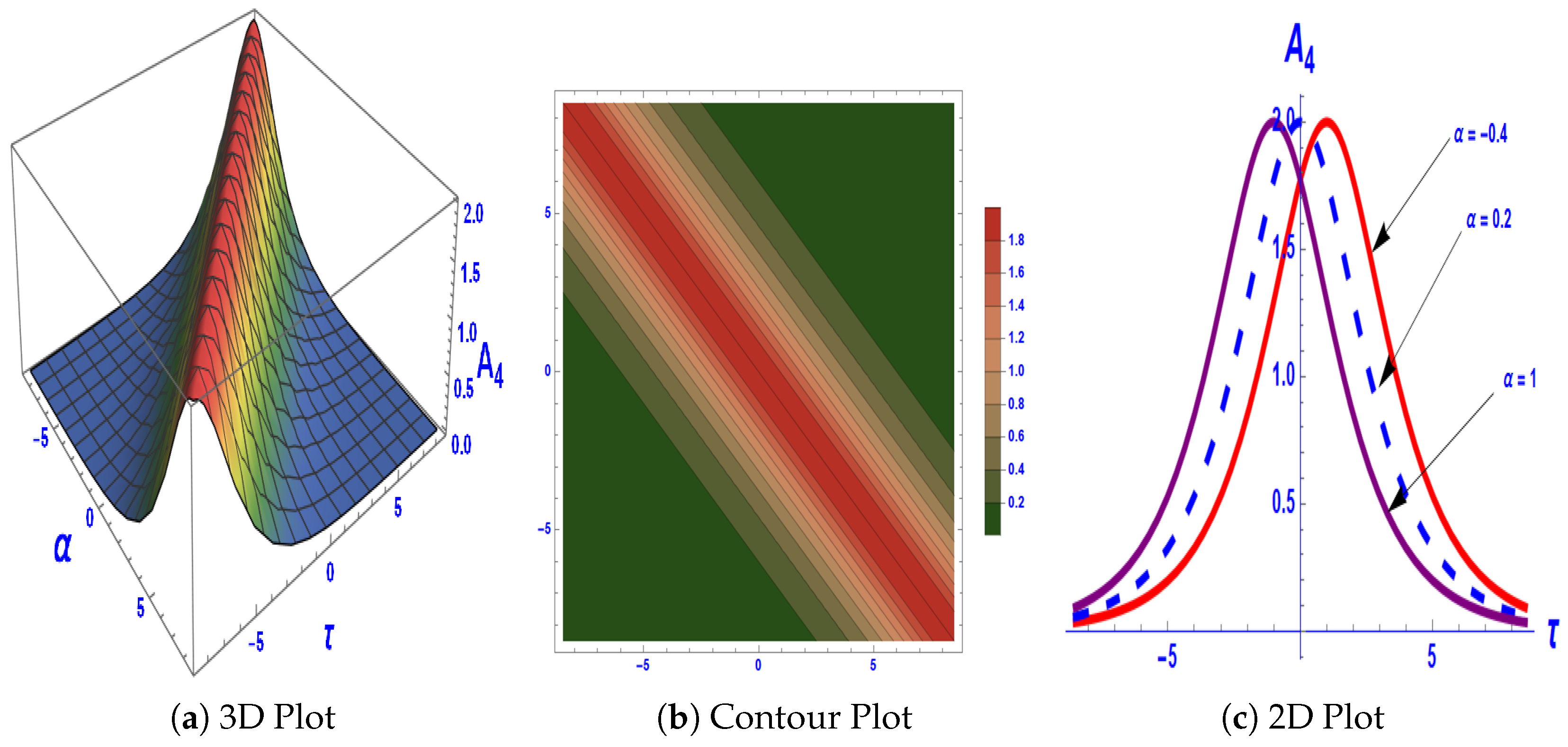
Disclaimer/Publisher’s Note: The statements, opinions and data contained in all publications are solely those of the individual author(s) and contributor(s) and not of MDPI and/or the editor(s). MDPI and/or the editor(s) disclaim responsibility for any injury to people or property resulting from any ideas, methods, instructions or products referred to in the content. |
© 2025 by the authors. Licensee MDPI, Basel, Switzerland. This article is an open access article distributed under the terms and conditions of the Creative Commons Attribution (CC BY) license (https://creativecommons.org/licenses/by/4.0/).
Share and Cite
Beenish; Samreen, M.; De la Sen, M. Dynamical Analysis and Solitary Wave Solutions of the Zhanbota-IIA Equation with Computational Approach. Math. Comput. Appl. 2025, 30, 100. https://doi.org/10.3390/mca30050100
Beenish, Samreen M, De la Sen M. Dynamical Analysis and Solitary Wave Solutions of the Zhanbota-IIA Equation with Computational Approach. Mathematical and Computational Applications. 2025; 30(5):100. https://doi.org/10.3390/mca30050100
Chicago/Turabian StyleBeenish, Maria Samreen, and Manuel De la Sen. 2025. "Dynamical Analysis and Solitary Wave Solutions of the Zhanbota-IIA Equation with Computational Approach" Mathematical and Computational Applications 30, no. 5: 100. https://doi.org/10.3390/mca30050100
APA StyleBeenish, Samreen, M., & De la Sen, M. (2025). Dynamical Analysis and Solitary Wave Solutions of the Zhanbota-IIA Equation with Computational Approach. Mathematical and Computational Applications, 30(5), 100. https://doi.org/10.3390/mca30050100






